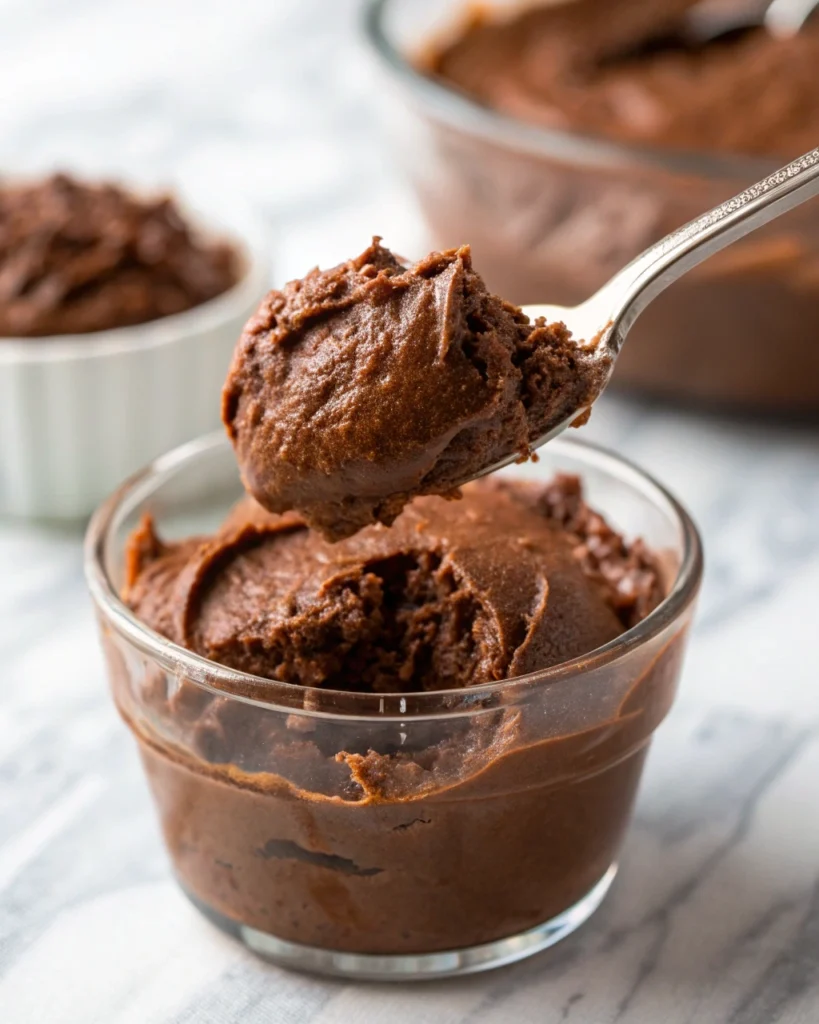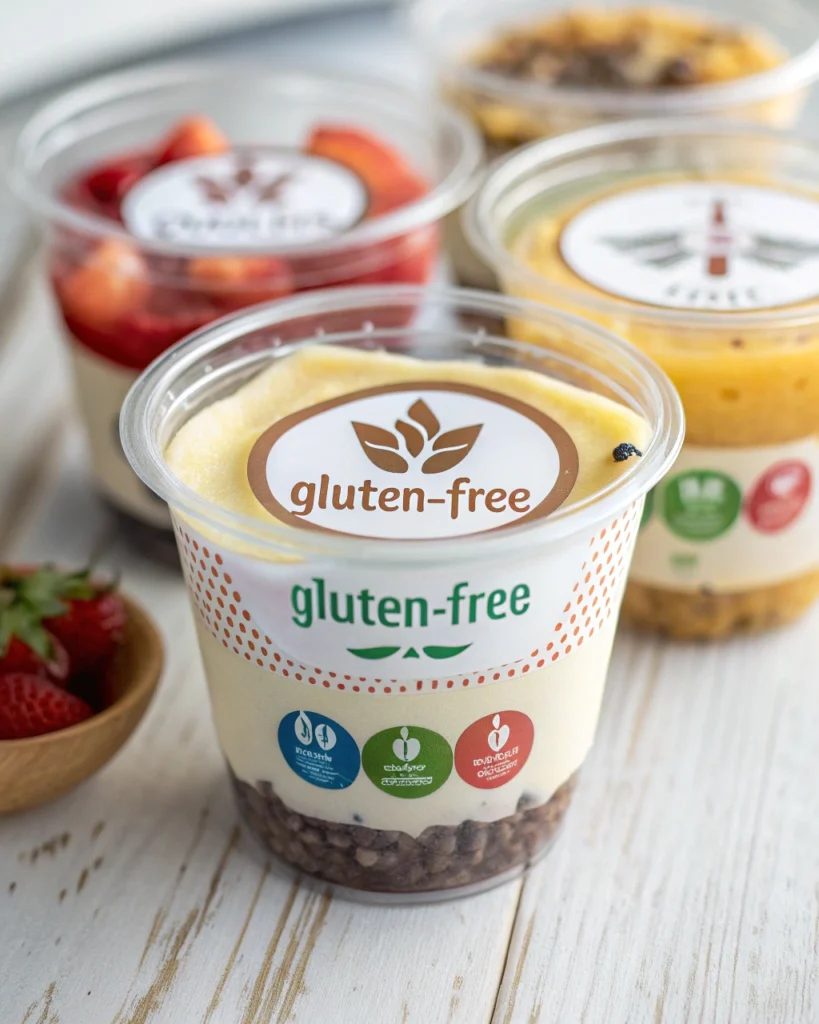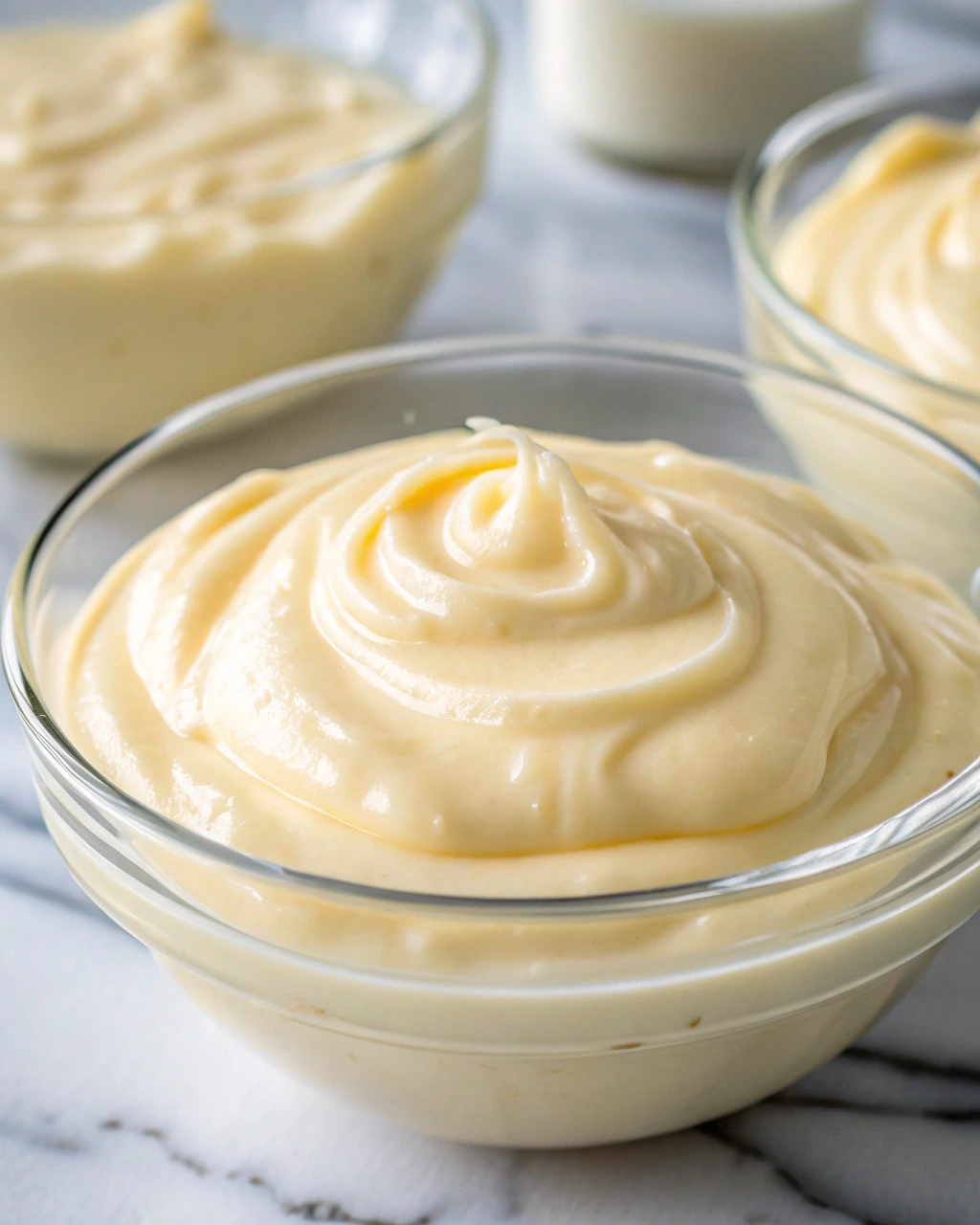Whether you’re living with celiac disease or just trying to avoid gluten for personal health reasons, figuring out which foods are truly gluten-free can be a real chore. One treat that raises a lot of questions is pudding. That silky-smooth dessert found everywhere—from lunchboxes to restaurant menus—often sparks concern. Is pudding gluten free? The answer isn’t as simple as “yes” or “no.” It depends on the ingredients, how it’s made, and even the brand.
This complete guide dives deep into everything you need to know about pudding and gluten. From decoding ingredients to exploring safe store-bought brands, and even tackling pudding in restaurants, we’ll help you find the safest and tastiest gluten-free options. We’ll also cover popular questions, examine labeling tricks, and share the best pudding mixes that won’t upset your stomach. So grab a spoon—let’s dig in!
Table of Contents
Understanding Gluten and Why It Matters in Pudding
What is Gluten and Why Avoid It?
Gluten is a group of proteins found in wheat, barley, and rye. While harmless for most, it’s a big no-no for people with celiac disease or gluten sensitivity. When someone with celiac eats gluten, it can cause serious digestive issues, nutrient malabsorption, and long-term health complications. That’s why knowing if something like pudding contains gluten is more than just curiosity—it’s essential.
Common Sources of Gluten in Processed Foods
Processed foods are sneaky. Gluten hides in places you wouldn’t expect—like sauces, spice blends, and yes, desserts. Modified food starch, malt flavoring, and certain thickeners are common culprits. So when it comes to pudding, especially instant mixes or restaurant varieties, it’s crucial to look beyond the surface. Even small traces of gluten can trigger symptoms.
Is Pudding Gluten Free: Why This Question Matters for Celiacs
You might assume all pudding is safe—after all, it’s just milk, sugar, and cornstarch, right? Not so fast. Commercial puddings may include gluten-based thickeners or flavorings. Even cross-contamination during manufacturing is a concern. That’s why the question is pudding gluten free pops up so often in gluten-free communities. For people with celiac or non-celiac gluten sensitivity, the wrong choice can mean days of discomfort—or worse.
Key Ingredients in Pudding That May Contain Gluten

Modified Food Starch, Thickeners, and Hidden Gluten Sources
When it comes to reading pudding labels, the devil’s in the details. One of the biggest red flags for anyone wondering is pudding gluten free is modified food starch. Although many manufacturers use gluten-free sources like corn or tapioca, some still rely on wheat-derived starch, especially in older formulations or international brands. Tapioca, for example, is a naturally gluten-free thickener commonly used in pudding and other desserts. According to Healthline, tapioca is extracted from cassava root and is often favored in gluten-free baking and desserts due to its neutral taste and strong thickening ability.
In addition to starches, other pudding ingredients—like stabilizers, gelling agents, or flavor enhancers—can be derived from barley or wheat. This is why products that seem safe might still cause reactions. If you’re trying to avoid gluten, scrutinize terms like “malt flavoring” or “modified food starch” that don’t specify their origin. Even small traces of gluten can be harmful to individuals with celiac disease or gluten intolerance.
Artificial Flavors, Stabilizers, and Cross-Contamination Risks
Another sneaky area to watch? Artificial flavors. These aren’t always synthetic; some are derived from grains. While FDA guidelines require allergens to be disclosed, not every brand follows best practices. For folks asking is pudding gluten free, the lack of transparency in labeling can be downright frustrating.
Cross-contamination is another major concern—especially in factories that process gluten-containing foods. A pudding might not list gluten, but if it’s processed on shared equipment, the risk remains. That’s why certified gluten-free labels provide peace of mind. When in doubt, call the company or check their website for allergen information.
Is Pudding Gluten Free in Packaged Form or Only When Homemade?
The answer depends on how it’s made. Many commercial brands now cater to gluten-free consumers, offering puddings that are safe and even labeled as such. However, this isn’t universal. Homemade pudding, on the other hand, gives you full control. With a simple combo of milk, sugar, eggs, and a gluten-free thickener like tapioca, you can whip up a dessert that’s both tasty and worry-free.
Still, even when making it yourself, ingredients like vanilla extract, chocolate chips, or store-bought toppings could introduce gluten if you’re not careful. So always double-check, especially if you’re prepping food for someone with celiac.
Is Store-Bought Pudding Gluten Free? A Brand-by-Brand Review
Jell-O Pudding: Is Jell-O Vanilla Instant Pudding Gluten-Free?
When it comes to store-bought options, Jell-O is a go-to for many. Most of their pudding mixes, including Chocolate and Vanilla Instant Pudding, are free from gluten ingredients. So, is pudding gluten free if it’s from Jell-O? Generally, yes. But there’s a catch: their Instant Cheesecake Pudding contains barley, which is definitely not safe for people with celiac disease. Always read the label because formulations can change without warning.
Kozy Shack and Snack Pack Puddings: Are They Truly Gluten-Free?
Kozy Shack takes the guesswork out of the equation. Their rice, tapioca, and chocolate puddings are all labeled gluten-free and made with minimal ingredients. Snack Pack, a childhood favorite, is also gluten-free across most flavors like Chocolate, Vanilla, and Butterscotch. According to manufacturer ConAgra, they clearly label allergens, making it easier for shoppers to make informed choices.
Simply Delish, Mom’s Place, and Organic Brands: Safe for Celiacs?
If you’re looking for certified gluten-free options, brands like Simply Delish and Mom’s Place hit the mark. Simply Delish offers pudding mixes in Banana, Vanilla, and Chocolate that are gluten-free, vegan, and even keto-friendly. Mom’s Place, on the other hand, caters specifically to gluten-free diets and offers clean-label mixes that taste homemade. Organics brands, like Annie’s and some Whole Foods options, also carry puddings labeled gluten-free—but always check for certification, especially with private label products.
How to Read Gluten-Free Labels on Pudding Brands
Reading labels might feel tedious, but it’s essential. Look for bold print allergen warnings and gluten-free certifications. Phrases like “processed in a facility that also processes wheat” can indicate potential cross-contamination. The keyword is pudding gluten free often leads back to label reading. If you’re unsure, it’s best to skip it or look for products listed by reputable gluten-free sources like Celiac.org.
In summary, while many pudding brands are gluten-free, some are not. Always check for hidden ingredients, and when in doubt, go for certified products to stay on the safe side.
Homemade Pudding vs Packaged Mixes: Which Is Safer?

Controlling Ingredients in Homemade Pudding
If you’ve ever asked yourself, is pudding gluten free, then making it from scratch is probably your safest bet. When you make homemade pudding, you control every ingredient—from the thickener to the flavoring. Instead of using questionable additives or modified starches, you can opt for safe, gluten-free thickeners like cornstarch or tapioca flour. Both are widely available and naturally gluten free.
Plus, you can sweeten things to your liking, choose dairy-free milk if needed, and skip preservatives. It’s a win-win for anyone avoiding gluten or trying to eat clean. And the best part? It’s surprisingly easy and customizable with fruits, cocoa, or nut butters. For a protein-packed variation, you might also want to try this protein pudding recipe from SweetTreatsRecipes.com.
Using Gluten-Free Thickeners like Cornstarch or Tapioca
When it comes to thickening pudding, not all options are created equal. Some boxed mixes use wheat-based starches that can trip up anyone trying to avoid gluten. But natural alternatives like cornstarch and tapioca flour are ideal. According to Healthline, tapioca is extracted from cassava and is naturally gluten free, making it a smart pick for thickening everything from pudding to sauces.
Just dissolve a tablespoon or two in a bit of cold milk before adding it to your warm base. Voilà—instant thickening without the gluten. Want to experiment? Try creating your own banana or chocolate pudding with a touch of cinnamon for depth. For more dessert ideas, you might enjoy the Paula Deen Banana Pudding recipe on SweetTreatsRecipes.com.
How to Avoid Cross-Contamination in Your Kitchen
Even if you’re using all gluten-free ingredients, cross-contamination can still happen at home. Shared utensils, cutting boards, and mixing bowls that were used for wheat-based dishes might leave traces behind. Be sure to clean everything thoroughly, use separate equipment if possible, and double-check your storage practices. It might sound tedious, but it makes a world of difference—especially for those with celiac disease.
If you’re baking frequently, consider labeling your gluten-free gear to avoid mix-ups. Prevention is way easier than dealing with gluten-triggered symptoms later.
Is Pudding Gluten Free in Restaurants and Cafés?
Challenges of Eating Pudding in Food Service Settings
Dining out can be a minefield when you’re gluten-sensitive. Even simple dishes like pudding aren’t always safe. The question is pudding gluten free becomes even trickier in restaurants, where ingredient lists are rarely available. Many chefs add thickeners, flavor enhancers, or ready-made mixes that could contain gluten. Plus, shared prep areas raise the risk of cross-contact.
Unless the menu states “gluten-free” clearly, it’s best to be cautious. Even that rich chocolate pudding in a glass cup might have flour-based thickeners or a cookie crumble garnish that ruins it for gluten-free eaters.
Questions to Ask to Ensure It’s Gluten Free
When in doubt, ask. Don’t be shy—your health matters. Questions like “Do you use wheat or flour to thicken this?” or “Is the pudding made from scratch?” can help clarify things. If the server can’t confirm, ask to speak with the chef. Be polite but firm. Most food service professionals today are familiar with gluten-free needs and happy to help if they can.
Also, be wary of phrases like “gluten friendly” or “no gluten added”—they don’t guarantee safety. Instead, look for dishes specifically labeled as gluten-free, and confirm they’re prepared separately from gluten-containing foods.
Is Restaurant-Style Chocolate or Bread Pudding Ever Safe?
Sadly, most restaurant bread puddings are off-limits—they’re literally made with bread. And unless the bread is certified gluten free (and made in a safe kitchen), it’s a no-go. Chocolate puddings, on the other hand, are a bit safer, especially if made from simple ingredients. But again, always double-check. Fancy toppings, mix-ins, or sauces could introduce gluten without warning.
Until more restaurants offer clearly labeled gluten-free desserts, homemade or store-bought certified brands are still your safest dessert bet. Want to try a homemade twist on a classic? Check out this creative White Chocolate Bread Pudding—just be sure to use gluten-free bread if needed.
Certified Gluten-Free Pudding Brands to Trust

Top Rated Gluten-Free Pudding Brands from Celiac.com
If you’ve ever stood in the dessert aisle wondering is pudding gluten free, you’re not alone. The good news? Several pudding brands are certified gluten-free and trusted by the gluten-sensitive community. According to Celiac.com, brands like Kozy Shack, Simply Delish, Mom’s Place, and Snack Pack are reliable options. These companies clearly label their products and often test them for trace amounts of gluten.
Kozy Shack, for example, uses simple ingredients and avoids artificial thickeners that might contain gluten. Their rice and tapioca puddings are popular picks. Simply Delish goes even further—offering vegan, sugar-free, and keto-friendly pudding mixes that are all gluten-free. If you’re looking for variety, this is the brand to try.
Certified Logos and What They Mean
So how do you really know if a pudding is safe? Look for certification logos. Brands certified by organizations like the Gluten-Free Certification Organization (GFCO) or the Celiac Support Association (CSA) meet strict standards. These seals ensure products contain less than 20 parts per million (ppm) of gluten—considered safe for most with celiac disease.
However, not all “gluten-free” labels are created equal. Some just mean no gluten ingredients were used, but there’s no guarantee of a clean manufacturing process. That’s why these third-party seals add extra assurance when you’re asking yourself, is pudding gluten free and safe to eat.
Tips for Finding Gluten-Free Pudding in Grocery Stores
Shopping for gluten-free pudding doesn’t have to be stressful. Start by checking the gluten-free aisle—many stores group these items together. If you’re unsure, scan the ingredient list for wheat, barley, rye, or malt. Watch for red-flag terms like “natural flavors” or “modified food starch” unless they’re clearly sourced from corn or tapioca.
In big-box stores, use mobile apps like the Gluten Free Scanner to quickly check products. And when in doubt, go for brands you know are certified. They may cost a bit more, but the peace of mind is worth every penny.
FAQs
Is Jell-O Vanilla Instant Pudding Gluten-Free?
Yes, in most cases. Jell-O Vanilla Instant Pudding doesn’t list gluten ingredients and is considered gluten-safe. However, Kraft doesn’t label it gluten-free due to possible cross-contamination risks. So while many consider it safe, those with high sensitivity should use caution. Always check the most recent packaging before buying.
Does Snack Pack Pudding Have Gluten?
Nope! Snack Pack puddings are labeled gluten-free and are widely considered safe for people with celiac disease. They’re an excellent grab-and-go option for kids’ lunches or quick desserts. Just be mindful of seasonal or limited-edition flavors—double-check those labels just in case.
Is Swiss Miss Pudding Gluten-Free?
Generally, Swiss Miss puddings are not labeled gluten-free, which means there’s a risk of gluten being present, either from ingredients or cross-contact. Until they’re certified or labeled clearly, it’s best to stick to other verified brands if you need to avoid gluten entirely.
Are There Gluten-Free Puddings Available in Stores?
Absolutely! From Kozy Shack to Simply Delish, your local grocery store likely has multiple options. Many organic and health food stores also stock specialty gluten-free brands. The key is knowing where to look and how to read labels.
Is Cool Whip Gluten-Free?
Yes, Cool Whip is generally considered gluten-free. However, Kraft does not guarantee zero cross-contamination. If you’re extremely sensitive, check the label and consider contacting the company directly for reassurance. It’s often used as a topping in pudding desserts, so it’s helpful to know where it stands.
Is Peanut Butter Gluten-Free?
Most natural peanut butters are gluten-free. But flavored or low-fat versions might contain additives that aren’t safe. If you’re mixing peanut butter into your pudding (yum!), stick to trusted brands that are labeled gluten-free and have simple ingredient lists.
Conclusion
Summary of Safe Brands and Ingredients
After breaking it all down, the answer to is pudding gluten free really comes down to the brand, ingredients, and preparation method. Many popular brands like Kozy Shack, Simply Delish, and Snack Pack offer gluten-free options that are safe for people with celiac disease or gluten sensitivity. On the other hand, not all Jell-O puddings are completely safe—some contain barley, so it’s crucial to check labels every time.
When it comes to homemade pudding, you’re in control. By using gluten-free thickeners like cornstarch or tapioca, and choosing clean, simple ingredients, you can enjoy a delicious, worry-free dessert. Just make sure your kitchen stays free from cross-contamination if you’re cooking for someone on a strict gluten-free diet.
Natural Gluten-Free Options to Try
Gluten-free pudding doesn’t have to be bland or boring. With so many creative ingredients and flavors out there, you’ve got options! Try mixing in fresh fruit, dairy-free milk alternatives, or nut butters for extra richness. Or experiment with chia seeds and coconut milk for a modern twist.
Still wondering is pudding gluten free? When in doubt, make it yourself or go with a certified brand. That way, you can satisfy your sweet tooth without sacrificing your health. So go ahead—grab a spoon and enjoy every creamy, gluten-free bite.
Did you make this recipe?

Gluten-Free Pudding Guide
- Total Time: 20 minutes
- Yield: 4 servings
- Diet: Gluten-Free
Description
A comprehensive guide to understanding gluten in pudding, including safe brands and homemade options.
Ingredients
- Milk
- Sugar
- Gluten-free thickener (Cornstarch or Tapioca)
- Vanilla extract (optional)
- Chocolate or cocoa powder (for chocolate pudding, optional)
- Fruits or nut butters (for variations, optional)
Instructions
- In a saucepan, combine the milk and sugar, and heat over medium heat until warm but not boiling.
- In a separate bowl, mix the gluten-free thickener with a small amount of cold milk to dissolve it.
- Once the milk mixture is warm, gradually whisk in the thickener mixture.
- Continue to cook, stirring constantly, until the pudding thickens.
- Remove from heat and add vanilla or cocoa powder if desired.
- Pour into serving dishes and refrigerate until set.
Notes
For a gluten-free version, always choose certified gluten-free ingredients and be cautious of cross-contamination in cooking areas.
- Prep Time: 10 minutes
- Cook Time: 10 minutes
- Category: Dessert
- Method: Stovetop
- Cuisine: American
Nutrition
- Serving Size: 1 serving
- Calories: 200
- Sugar: 18g
- Sodium: 100mg
- Fat: 5g
- Saturated Fat: 3g
- Unsaturated Fat: 2g
- Trans Fat: 0g
- Carbohydrates: 30g
- Fiber: 0g
- Protein: 3g
- Cholesterol: 10mg
Keywords: Gluten-Free, Pudding, Dessert, Homemade Pudding, Celiac Safe

